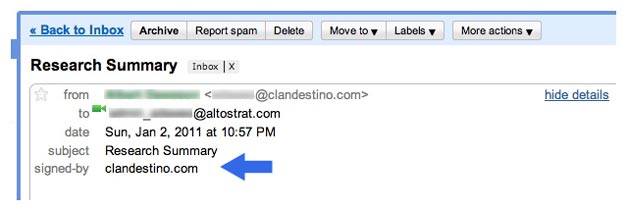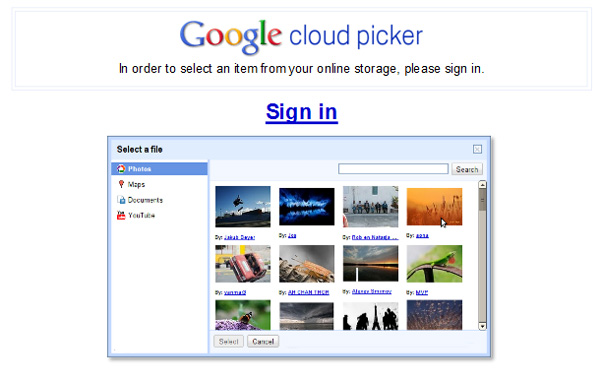eBay has launched a new version of its eBay Fashion iPhone app. This one lets users virtually try on sunglasses by using their phone’s front-facing camera to capture an image of themselves and fit the sunglasses to their faces.
This comes in the form of a "see it on" feature. As eBay’s Richard Brewer-Hay explains, simply access this feature from the app’s front page, isolate an image of yourself using the camera, choose different styles of sunglasses, fit the glasses to your face using a pinch and zoom measurement, and purchase the pair you like best – right from your mobile phone.
The video illustrates:
We can expect to see a lot more of this kind of thing in e-commerce as more people get smartphones, smartphones (and other devices) get better, and more retailers realize the tremendous opportunities this presents.
Augmented reality could potentially be the biggest thing in e-commerce since the search engine. It’s a great concept from the desktop, but mobile takes it to a whole different level. This could both disrupt brick and mortar retail stores and complement them.
Perhaps a customer is having a hard time finding a shirt they like at the store they’re browsing in. A retailer may be able to point them to one which is currently out of stock, but is available to order online. The customer could then see what it looks like on them from their phone, similar to how eBay’s new app works.
On the flipside, if this technology becomes more widely used and continues to improve, it may significantly reduce customers’ needs and desires to actually go to the physical stores. Why fight the mall traffic if I can try on the same merchandise from my couch, my friend’s house, or even from the waiting room at the Dentist?
"One of the greatest barriers in e-commerce is that the customer never gets to try out the product before buying it, as opposed to shopping in a physical store," says Christian Holst at Baymard Institute. "This is why research, experiments and best practices often recommend large product images, product videos and 3D product tours to improve e-commerce conversions. All to simulate the experience of holding the physical product."
"This will of course never come close to the experience of holding the product in your own hands, trying it out – or in the case of apparel, trying it on," adds Holst. "But with the rise of cameras in nearly every electronic device some smart retailers have found ways to use augmented reality to place the virtual products in the customer’s own life and environment."
Holst points to an iPhone app from watchmaker Neuvo, which lets users virtually try on watches, as another example. Kevin Tofel at GigaOm mentions a Converse iPhone app, which lets you virtually try on shoes.
So, is augmented reality the future of e-commerce or is it simply the present. Well, while there are clearly examples out there, it has yet to go mainstream. Tofel doesn’t think it will for go mainstream for another 5 to 10 years, but I’m not sure it will take that long.
For one, ebay is a huge force in online retail, and I don’t imagine it will take that long for them to expand this to much more than the current functionality of this app. Also, given eBay’s size and influence, competitors are going to want to match or better the functionality.
More smartphones that support the technology will flood the market, and people will buy them. The first thing people tend to do when getting their first smartphone or one with new functionalities, is look for all the coolest apps that take advantage of them. A new experience like virtually trying on clothing or accessories is bound to appeal to many. Combine that with more people simply using mobile for more of their web use in general, and I see no reason not to believe that e-commerce is going to be greatly impacted by augmented reality in the near future.
Agree? Disagree? Comment here.




 It’s worth noting that this week, Rackspace also announced that the open source OpenStack project founded by Rackspace and NASA
It’s worth noting that this week, Rackspace also announced that the open source OpenStack project founded by Rackspace and NASA  "From day-one Rackspace has believed industry standards emerge from widely adopted, open platforms," said Lew Moorman, president, cloud and chief strategy officer at Rackspace Hosting. "Over the past six months we have seen the OpenStack community grow, showing we are not alone in this fight. As one of the founding members we couldn’t be more excited about OpenStack’s success. We plan to continue to deploy OpenStack at Rackspace as the center of our cloud hosting options."
"From day-one Rackspace has believed industry standards emerge from widely adopted, open platforms," said Lew Moorman, president, cloud and chief strategy officer at Rackspace Hosting. "Over the past six months we have seen the OpenStack community grow, showing we are not alone in this fight. As one of the founding members we couldn’t be more excited about OpenStack’s success. We plan to continue to deploy OpenStack at Rackspace as the center of our cloud hosting options." 








 "Cloud computing has a demonstrated track record of cost savings and efficiencies," said Casey Coleman, GSA Chief Information Officer.
"Cloud computing has a demonstrated track record of cost savings and efficiencies," said Casey Coleman, GSA Chief Information Officer.  Also, it seems that the agreement is "is projected to save the city $50 million over the next five years." Which is a rather stunning amount.
Also, it seems that the agreement is "is projected to save the city $50 million over the next five years." Which is a rather stunning amount. Meanwhile, Google is continuing to rack up businesses for
Meanwhile, Google is continuing to rack up businesses for 

 “American education has been the best in the world, but we’re falling below our own high standards of excellence for high school and college attainment,” said Bill Gates, co-chair of the Bill & Melinda Gates Foundation.
“American education has been the best in the world, but we’re falling below our own high standards of excellence for high school and college attainment,” said Bill Gates, co-chair of the Bill & Melinda Gates Foundation.